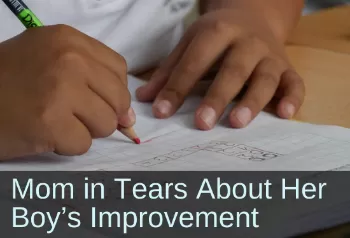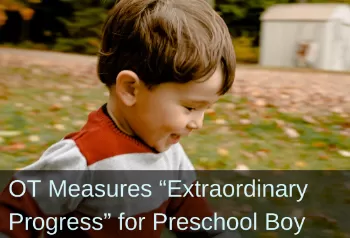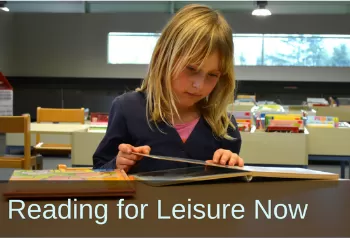Visual Processing Depends on Neurodevelopmental Movements
by Sonia Story, M.S.
The development of vision begins in early infancy and depends on the neurodevelopmental movements of infancy—including primitive reflexes—to provide sensory-motor inputs for developing our visual skills (Domingo-Sanz, 2024; Gessel, 1952).
For most human beings, daily activities require extensive visual processing. While all of our sensory systems are highly complex, “Human vision outranks all other senses in the abundance of its sensory, motor, autonomic and higher cortical ramifications” (Gesell, 1952). As Gesell (1952) describes, the important [asymmetrical] tonic-neck-reflex pattern (ATNR) develops in the womb and then “undergoes further developments in the elaboration of the eye-hand-brain complex for months and even years to come” (Gesell, 1952).
Along with ATNR, many primitive reflexes develop and support visual skills throughout infancy and early childhood. Marusich (2002), a developmental optometrist, explains that poor integration of early infant reflexes can be the basis of problems such as “poor ocular movement, binocularity, accommodation, and visual performance.”
Crawling is another neurodevelopmental movement that helps develop visual processing skills. For example, research suggests that when babies start crawling, they undergo remarkable development in their ability to process visual motion: “Only a few weeks after crawling onset, infants process visual motion faster and more efficiently, and they differentiate between motion speeds and directions” (van der Meer & van der Weel, 2022).
Can neurodevelopmental movements improve visual skills?
The Beneficial Impact of Reflex Integration on Visual Skills
The neurodevelopmental movements are important for remediation of visual skills. School-age children with visual challenges show significant improvements in visual activities, such as reading, when they are given specific sensory-motor activities based on the ATNR pattern and other early infant reflexes and movements (Domingo-Sanz, 2024, Domingo-Sanz, 2022; McPhillips, et al., 2000; Jordan-Black, 2005; Wahlberg & Ireland, 2005).
What about Vision Therapy?
Many vision doctors utilize the power of primitive reflex integration as part of vision therapy. You can see why vision doctors and therapists love these tools on our dedicated vision therapy page.
The following research summaries on vision are excerpts from the book, Reflexes, Movement, Learning and Behaviour, Analysing & Unblocking Neuro-Motor Immaturity (Goddard Blythe, 2023, emphasis added).
If eyesight is found to be normal, but there is a cluster of abnormal reflexes, a reflex stimulation/inhibition program can make a profound difference to both oculo-motor and visual-perceptual skills. A vision therapist working in the Netherlands found that he achieved the greatest success if he delayed using vision therapy until a child had had at least six months on a reflex stimulation/inhibition program. In many cases, vision therapy was not required after the reflexes had matured. In those cases where residual oculo-motor problems remained, the time needed on a vision therapy program was halved (Ten Hoopen, 1995, as cited in Goddard, 2023, pp. 181-183).
Bein-Wierzbinski (2001), using an infra-red computerized eye-tracking machine, found the STNR [Symmetrical Tonic Neck Reflex] to be a factor in a group of children tested for aberrant eye movements…after a reflex stimulation/inhibition program had been followed, control of eye movements generally improved markedly as the reflexes matured… (as cited in Goddard, 2023, p. 43).
Since most individuals rely greatly on the visual system to be successful in functional tasks, it makes sense to utilize evidence-based sensory-motor tools, such as the ATNR and other reflex patterns that support the foundation for optimal functioning of the visual system.
Using the innate rhythmic and reflex movements from the Brain and Sensory Foundations course appears to develop improved visual skills, as seen in the following case studies.
Here is an example of how a skeptical OT helped her 8-year-old client. This little boy struggled for years with poor visual processing skills, handwriting, and difficulty attending to structured tasks. See how his OT used neurodevelopmental movements to help him see profound improvements in just 5 sessions.
This little girl struggled with many tasks. Find out how, through the use of rhythmic movements and primitive reflex integration, she drastically improved visual memory, the ability to track objects, handwriting skills, and posture.
Assessed as at-risk and below average for visual motor tasks via the Berry Visual-Motor Test, this preschooler was struggling in school, as well as with fine and gross motor skills. See how, over the course of 12 weeks, his OT used tools from the Brain and Sensory foundations First Level course resulting in "extra ordinary progress," including bringing him up to age level in design duplication on the Berry Visual-Motor Test.
This OT's initial meeting with her client revealed evidence of unintegrated Asymmetric Tonic Neck Reflex (ATNR), Symmetric Tonic Neck Reflex (STNR), and Tonic Labyrinthine Reflex (TLR). These unintegrated reflexes were manifesting in issues such as frustration with reading, difficulty with visual tracking, anxiety when speaking, and challenges staying on task and retaining information. See how neurodevelopmental movements helped address all of these issues.
References
Domingo-Sanz, V. A. (2024). Persistence of primitive reflexes associated with asymmetries in fixation and ocular motility values. Journal of Eye Movement Research, 17(2).
Domingo-Sanz, V. A. (2022). Inhibition of Primitive Reflexes and Its Relationship with Visual Projection in Children and Adolescents. Optometry & Visual Performance, 10(4)
Gesell, A. (1952). Infant development: The embryology of early human behavior. Hamish Hamilton.
Jordan-Black, J. (2005). The effects of the Primary Movement programme on the academic performance of children attending ordinary primary school. Journal of Research in Special Educational Needs, 5(3), 101-111.
Goddard Blythe, S. (2023). Reflexes, movement, learning & behaviour. Analysing and unblocking neuro-motor immaturity. Hawthorn Press.
Marusich, C. E. (2002). Integration of primitive motor reflexes: Why should I care? Lecture presented at COVD, Fort Lauderdale. Accessed via DVD.
McPhillips, M., Hepper, P., & Mulhern, G. (2000). Effects of replicating primary-reflex movements on specific reading difficulties in children: A randomised, double-blind, controlled trial. The Lancet, 355(9203), 537-541.
van der Meer, A., & van der Weel, F. (2022, November 22). Motor Development: Biological Aspects of Brain and Behavior. Oxford Research Encyclopedia of Psychology. Retrieved 16 Sep. 2024, from https://oxfordre.com/psychology/view/10.1093/acrefore/9780190236557.001.0001/acrefore-9780190236557-e-903
Walhberg, T., & Ireland, D. (2005). Can replicating primary reflex movements improve reading ability? Optometry & Vision Development, 36(2).
Sonia Story, M.S. has been teaching neurodevelopmental movements since 2006.
Sonia developed the Brain and Sensory Foundations program to provide comprehensive training in neurodevelopmental movements—combining innate rhythmic movements, play, primitive reflexes, and postural reflexes.
She earned a Bachelor's degree in biology/psychology and a Master’s degree in Movement Sciences. She is the author of The Importance of Reflex Integration and the Evidence eBook, giving the rationale and evidence basis for using neurodevelopmental movements for helping with challenges such as ADHD, Sensory Processing Disorders, anxiety, emotional dysregulation, visual skill deficits, poor social skills, gross and fine motor delays and other neurodevelopmental and behavioral disorders.
Her work is featured in numerous podcasts, summits, and conferences, and in the books Almost Autism: Recovering Children from Sensory Processing Disorder; Special Ed Mom Survival Guide; Family Health Revolution; and Same Journey, Different Paths—Stories of Auditory Processing Disorder.
Sonia’s mission is to help children and families experience the profound benefits of neurodevelopmental and integrative movements for more functional and fulfilling lives.






